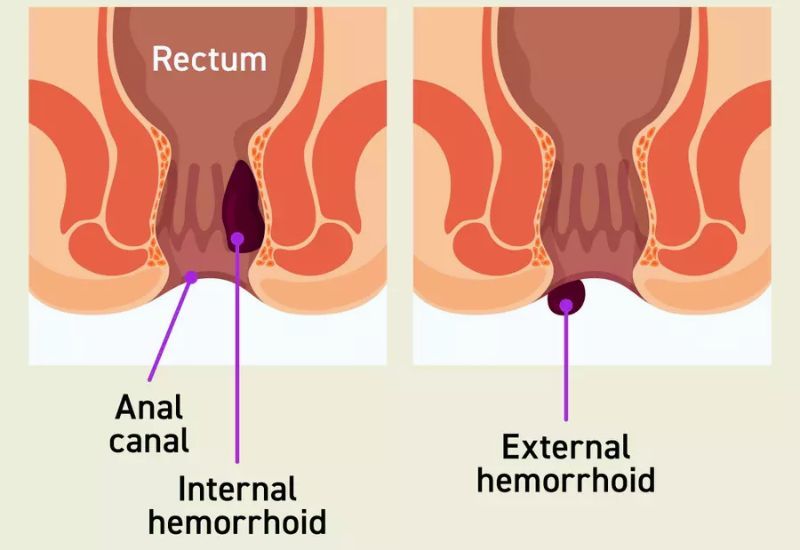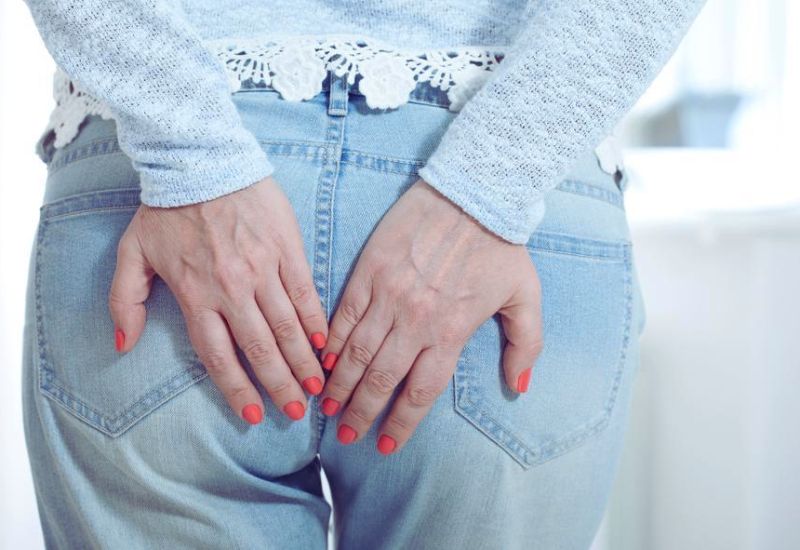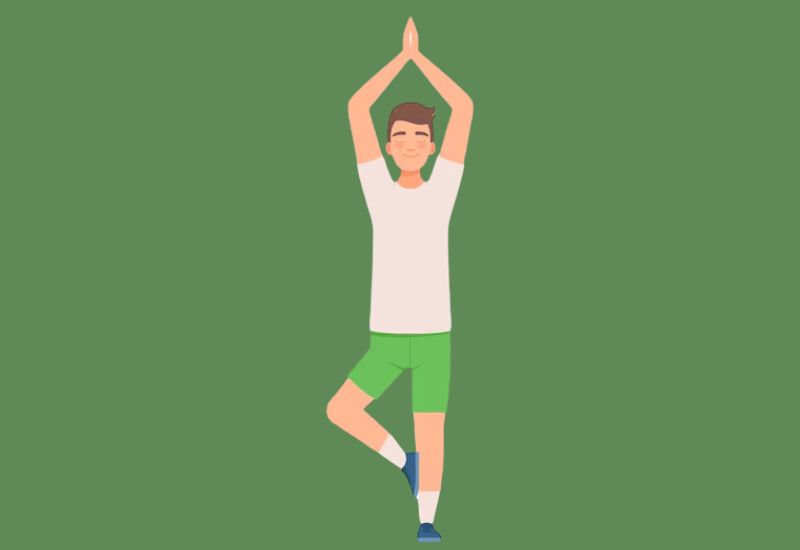Understanding the symptoms of external hemorrhoids is essential for timely treatment. External hemorrhoids, one of the most common anorectal conditions, affect daily life by causing discomfort and, if untreated, potentially severe complications. Let’s explore what external hemorrhoids are, how to identify the symptoms, and the potential risks if left untreated.
1. What Are External Hemorrhoids?
External hemorrhoids occur when veins around the anus become swollen due to excessive pressure, leading to the formation of painful hemorrhoid tissue outside the anus. This differs from internal hemorrhoids, which form inside the anus. While internal hemorrhoids may remain unnoticed, symptoms of external hemorrhoids are usually more evident due to their external location.

The location of external hemorrhoids is outside the anus, below the dentate line
2. Recognizing the Symptoms of External Hemorrhoids
Being able to identify the symptoms of external hemorrhoids is crucial for prompt diagnosis and treatment. Here’s how to recognize both mild and severe symptoms.
2.1. Mild Symptoms of External Hemorrhoids
In the early stages, external hemorrhoids symptoms may include:
– Bleeding during bowel movements: Patients may notice bright red blood, which indicates fresh blood from hemorrhoid tissue.
– Itching and discomfort: Persistent itching and irritation around the anus is common, often causing discomfort while sitting or lying down.
– Small lumps around the anus: These lumps or bulges form outside the anus and gradually enlarge if not treated.
2.2. Severe Symptoms of External Hemorrhoids
When external hemorrhoids worsen, the symptoms can become more intense:
– Severe pain: As hemorrhoid tissue becomes swollen and engorged with blood, the pain intensifies, particularly when sitting or during bowel movements.
– Hard, large lumps: In advanced cases, the external hemorrhoid tissue appears swollen, purple, or blue, indicating clotting or thrombosis.
– Difficulty with bowel movements: The swollen hemorrhoid tissue may block the anus, making it painful to pass stool and increasing the risk of infection.

External hemorrhoids can cause pain that ranges from mild discomfort to intense, severe pain.
3. Complications Associated with External Hemorrhoids
Ignoring symptoms of external hemorrhoids can lead to complications, including:
3.1. Anemia and Blood Infections
Chronic bleeding, even in small amounts, can cause anemia over time, leading to symptoms like fatigue and dizziness. In severe cases, an untreated external hemorrhoid can become infected, posing a risk of blood infection.
3.2. Hemorrhoidal Thrombosis
Blood clots can form in the veins around the anus, causing the external hemorrhoid to become hard and extremely painful. This condition, known as hemorrhoidal thrombosis, requires immediate medical attention.
3.3. Secondary Infections and Genital Involvement (in Women)
For women, proximity between the anus and the reproductive organs can increase the risk of infection spreading. Chronic external hemorrhoids may lead to irritation or infections in nearby areas, including the uterus, which is especially concerning during pregnancy.
3.4. Risk of Colorectal Cancer
Chronic inflammation from external hemorrhoids may, over time, allow harmful bacteria to invade the rectal area, increasing the risk of colorectal cancer. Untreated infections and persistent inflammation can facilitate the development of polyps or tumors in the rectum or colon.
4. Key Considerations for Patients with External Hemorrhoids
If you experience symptoms of external hemorrhoids, early intervention is key. Consult with a specialist to determine the appropriate treatment plan. Some general recommendations include:
– Avoid home remedies without professional advice: Many over-the-counter treatments lack scientific backing, so always seek medical advice before trying any home remedies.
– Maintain a balanced diet: To reduce strain during bowel movements, incorporate more fiber-rich foods, such as leafy greens and fruits, while limiting high-fat and spicy foods.
– Stay hydrated: Drinking sufficient water throughout the day helps keep bowel movements regular and soft.
– Exercise moderately: Light physical activity can improve blood circulation, which is beneficial for managing symptoms of external hemorrhoids.
– Limit alcohol and caffeine: These substances can contribute to dehydration and constipation, making hemorrhoid symptoms worse.

People with hemorrhoids can engage in light walking but should avoid intense activities or sitting for extended periods.
The symptoms of external hemorrhoids can range from mild discomfort to severe pain. Being aware of these symptoms can help you take early action to prevent complications. Consult with a healthcare provider for proper diagnosis and treatment to effectively manage or eliminate external hemorrhoids and improve your quality of life.








